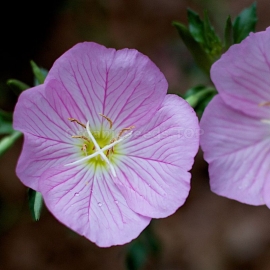
«Dolce» - Organic Evening Primrose Seeds
1.14 €
You may ask yourself why this is called an Evening Primrose, since it neither blooms in evening nor has primrose-colored flowers! Nonetheless, this unusual and exquisitely lovely variety is a native U.S. plant, hardy in most parts of the country.
-
Organic Evening Primrose «Dolce»
You may ask yourself why this is called an Evening Primrose, since it neither blooms in evening nor has primrose-colored flowers! Nonetheless, this unusual and exquisitely lovely variety is a native U.S. plant, hardy in most parts of the country and simply awash in soft pink blooms all summer long.
A real joy for the garden, it flourishes in poor, dry soils receiving hot sun, and thrives despite drought! Eager to reseed, it quickly establishes handsome, mounded colonies just 6 to 12 inches tall that return for years of beauty! The cup-shaped blooms are blush-pink at the petal tips, shading to pure white toward the tiny yellow center. 2 inches across, they jostle one another for position atop the low-growing plant, almost hiding the foliage.
And the bloom is successive waves from earliest summer till the onset of cooler fall temperatures. A fine choice for the front of the border or naturalized in an open meadowland setting. And if you like this pink species, try mixing it with gleaming white Innocence! Direct-sow this seed in late summer, autumn, or spring, or begin indoors in earliest spring to transplant as soon as the weather warms up. Space the plants about 6 to 8 inches apart for a dense carpet of color.
How to Grow
Part of the reason that many people regard this plant as a weed is that growing evening primrose is extremely easy to do. The yellow evening primrose plant is happiest in dry open areas similar to the open meadows where they thrive in the wild. Simply spread the seeds where you would like them to grow and as long as it is not too wet, the yellow evening primrose will happily grow.
It is a biennial that will reseed itself wherever you plant it, but it is not very invasive and will remain well behaved in your flower beds. Transplanting an evening primrose plant will probably not succeed, so you are better off planting them from seed.
